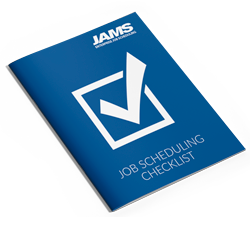Job Scheduling Checklist

When was the last time you looked at your current tech stack to see how your job scheduling tools are holding up? It’s important to regularly take stock of your automation efforts to ensure they’re helping your business—not hurting.
The Job Scheduling Checklist helps you take a careful look at your native schedulers, proprietary automation tools, and homegrown scheduling scripts. With this detailed list of evaluation criteria, you’ll be able to benchmark the functions of your current software—and the solutions you’re considering—to find out whether they’re creating real value for the business or whether they’re falling short.
Use the Job Scheduling Checklist to answer the following questions:
- Can my scheduler scale to meet the growing number of jobs and platforms we use?
- What job details will I be able to produce if we get audited?
- Does our job scheduler create a security risk?
- What kind of notifications do we get when jobs fail?
- Do we have a disaster recovery plan in place for our scheduled IT processes?